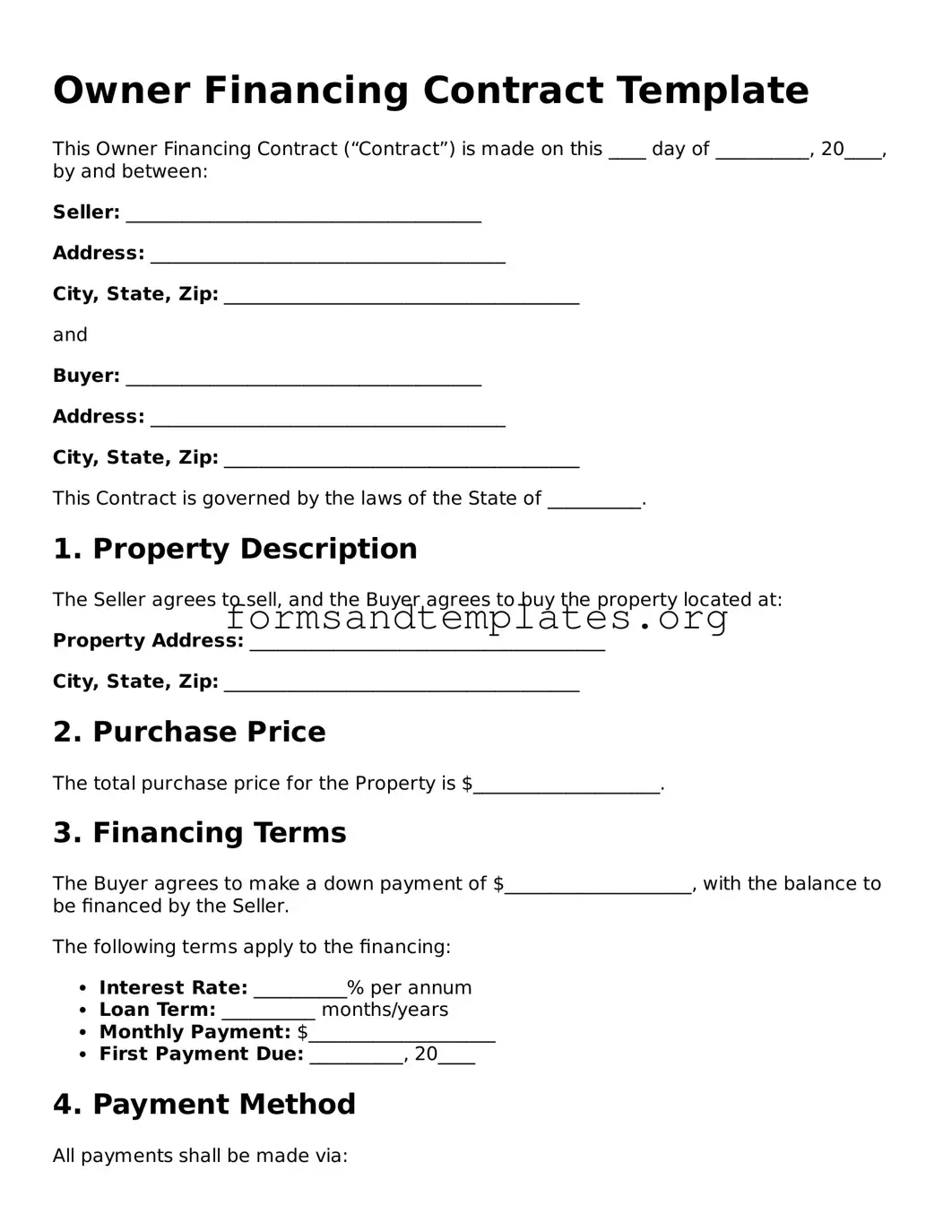Owner Financing Contract Template
This Owner Financing Contract (“Contract”) is made on this ____ day of __________, 20____, by and between:
Seller: ______________________________________
Address: ______________________________________
City, State, Zip: ______________________________________
and
Buyer: ______________________________________
Address: ______________________________________
City, State, Zip: ______________________________________
This Contract is governed by the laws of the State of __________.
1. Property Description
The Seller agrees to sell, and the Buyer agrees to buy the property located at:
Property Address: ______________________________________
City, State, Zip: ______________________________________
2. Purchase Price
The total purchase price for the Property is $____________________.
3. Financing Terms
The Buyer agrees to make a down payment of $____________________, with the balance to be financed by the Seller.
The following terms apply to the financing:
- Interest Rate: __________% per annum
- Loan Term: __________ months/years
- Monthly Payment: $____________________
- First Payment Due: __________, 20____
4. Payment Method
All payments shall be made via:
- Check
- Electronic transfer
- Other: ______________________
5. Closing Costs
Both parties agree to share the closing costs as follows:
- Seller: __________% of costs
- Buyer: __________% of costs
6. Default
In the event of a default by the Buyer, the Seller retains the right to:
- Terminate this Contract
- Retain any payments made as liquidated damages
7. Governing Law
This Contract shall be governed by the laws of the State of __________.
8. Signatures
By signing below, both parties agree to the terms of this Contract.
______________________________________
Seller's Signature Date: __________
______________________________________
Buyer's Signature Date: __________
This Contract is binding upon both parties and their respective heirs, assigns, and successors.
